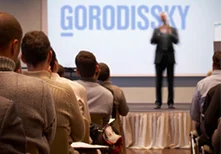Divisional applications in Russia: does the story continue?
17 June 2024On June 4, 2024, the Russian Supreme Court issued a decision that finalized the litigation between KRKA, d.d., Novo mesto (Slovenia), and AstraZeneca AB (Sweden) on invention patent 2643764.
About half a year earlier, on January 2, 2024, the Italian Supreme Court confirmed in its final decision that Pfizer has to pay over €13.4 million in compensation to the Italian Health Ministry and Finance Ministry for abusing its dominant position in the drug market.
Though these two litigations were about different matters and happened in two different jurisdictions, they had one common issue – the practice of filing divisional applications from early filed divisional applications was reconsidered. While the Russian Supreme Court decision indeed ended the local discussions regarding divisional-from-divisional practice, confirming its admissibility, the Italian Supreme Court looked at such practice from another perspective and suggested a “to be continued” ellipsis.
The Italian Supreme Court decision confirmed the previous appeal court decision that Pfizer had abused its dominant position through its overall conduct, which included (among other actions) filing a patent application and getting a divisional patent and corresponding supplementary protection certificate. By such a decision, the Italian Supreme Court included Pfizer’s action aimed at obtaining legal monopoly provided by a lawfully obtained patent into the scope of anticompetitive behavior, in the best possible interpretation – as a prerequisite for further unlawful action.
At almost the same time as the Italian Supreme Court decision, the Presidium of the Russian IP Court – having considered a cassation appeal of KRKA – had decided that the practice of filing divisional applications from divisional applications was initially wrong and did not correspond to the Paris Convention. The Presidium ruled that Russian law, being interpreted together with the provisions of Article 4G of the Paris Convention, should be understood as allowing the filing of divisional applications only from the very first application with the Rospatent and that there can only be one initial application. This decision was the last decision within the Russian IP Court and could be appealed with the Supreme Court, provided the Supreme Court considers it as being significant.
The decision of the Russian IP Court was appealed by AstraZeneca AB and the Rospatent and was accepted by the Supreme Court, emphasizing its significance.
Commenting briefly on the sequence of actions that preceded the Supreme Court decision:
- In 2021, KRKA filed an appeal with the Rospatent against granting invention patent 2643764 to AstraZeneca. This patent was issued in 2018 for an application filed in 2013 (hereinafter “Application 2013”) as a divisional application from an application filed in 2008 (hereinafter “Application 2008”), which in turn was filed as a divisional application from an application filed in 2004 (hereinafter “Application 2004”), which was the first application in this chain being nationalized in Russia PCT/US2003/015591. According to the Russian Civil Code, a priority of divisional application can be claimed from the initial application, which discloses the invention of the divisional application under the condition that, on the date of filing a divisional application, the initial application is not withdrawn, the patent for it has not been registered, or a possibility to appeal against the rejection of the initial application has not been exhausted.
However, KRKA insisted that Application 2013 could not benefit from the earliest priority of Application 2004 because the patent had already been granted on the date when Application 2013 was filed. The fact that AstraZeneca claimed for Application 2013 the priority of Application 2008 that had been pending at the time Application 2013 was filed should, in KRKA’s opinion, not be taken into consideration because only Application 2004 was the relevant basis to claim the priority from. Further, KRKA argued that since Application 2013 can only benefit from the priority of its filing date, the patent granted on Application 2013 is invalid in view of available prior art (Application 2004).
The Ropsatent rejected the appeal and retained the patent granted from Application 2013 in force.
Being dissatisfied with the decision of the Rospatent, KRKA appealed it with the Russian IP Court, almost completely repeating the arguments previously used in the appeal with the Rospatent.
The Russian IP Court, having considered in the first instance the submitted appeal, agreed with the Rospatent decision and explained that although the law mentions the application from which a divisional can claim a priority as “initial,” it does not understand the initial application as being the only one and does not restrict the number of a cascade or chain divisional applications to be filed. An application becomes “initial” not due to its special time of filing or status, but only when another, later application, mentions it as the priority naming itself as a divisional and that previously filed application as “initial” or “parent”. In other words, any pending application may become “initial” for another application if conditions for such pairing are met, namely, according to Russian law – the initial application shall disclose the invention of a divisional application, shall be filed by the same applicant or successor of latter as of the divisional, and shall be pending or eligible for appeal against rejection when divisional is filed. Therefore, according to the decision of the Rospatent confirmed by the first instance of the Russian IP Court, the patent for Application 2013 was validly granted and the priority for Application 2013 was properly claimed because on the date of filing Application 2013 and Application 2008 was pending, and Application 2004 was pending on the date of filing Application 2008.
Again, KRKA did not agree with the decision and submitted a cassation appeal to the Presidium of the Russian IP Court – the last instance in the court in which a decision can be reviewed by the Supreme Court only.
The decision of the Presidium of the Russian IP Court was surprising – it reverted the previous decisions stating that both Rospatent and the first instance court were wrong and that Art.1381 setting forth the provisions on priority right being interpreted together with Art.4G of the Paris Convention should be understood as allowing to claim priority for a divisional application only from the very first application in the chain, in this particular case – Application 2004, which only can be regarded as “initial.”
This decision surprised practitioners, both because of its focus on the attempt to properly interpret the word “initial” in the Paris Convention, and because of the potential reverting of the 30-year practice of the Rospatent on applying divisional application provisions of the law. Attempts to understand the word “initial” as used in the Paris Convention, without the context, solely literally can be difficult; this word is not used unanimously even across the Convention text itself, and also across various language versions of the Convention. It is used three times in the Spanish and French versions in two contexts, four times in the English version in three contexts, and five times in the Russian version in four contexts. Logical analysis of Paris Convention provisions setting forth the capability of the applicant to divide the application into a certain number of divisional applications tells that there is no restriction as to which application contains more than one invention – it can well be a divisional one that in its turn can be “divided.” The consequences of potentially placing numerous patents granted on divisional-from-divisional are unknown. Therefore, it was no surprise that the Presidium decision was appealed by AstraZeneca AB and the Rospatent, which were scheduled by the Supreme Court for hearing as separate cases, one after another on the same day.
On June 4, 2024, the Russian Supreme Court ended this intriguing story by canceling the Presidium of the IP Court decision and retaining in force the first decision that confirmed the lawfulness of divisional application chaining – the capability of the applicant to file as many applications as desired dividing them from divisional applications regardless of how many previously filed divisional applications exist in such chain.
Summarizing, finally the Russian law provisions on divisional applications got judiciary interpretation of the highest instance and can be understood and interpreted unanimously. Does that mean this is the end of the story? In the scope of the patent procedure and regulations – likely yes. Can the story continue to another branch of the law, as it happened in Italy, especially with pharma inventions? It may well do…










